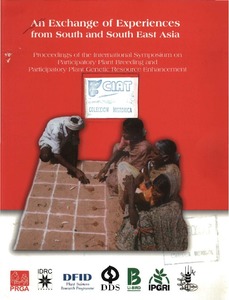Increasing the relevance of breeding to small farmers: Farmer participation and local knowledge in breeding barley for specific adaptation to dry areas of Jordan
Breeding philosophies and methodologies developed for favorable conditions and high-input agriculture have been ineffective in generating improved cultivars for marginal conditions and low-input agriculture. The project is implementing a novel breeding approach for barley improvement in the low-potential, marginal- rainfall environment of jordan, based on early selection and testing under farmer's conditions and with farmers' participation.
The expected outputs include identification of farmers' (men's and women's) selection criteria, introduction of participatory approaches into national breeding programs, dissemination of information generated by the project, increased adoption of new varieties in low-input agriculture, and higher and more stable barley yields. The new breeding program, targeted al marginal conditions and low-input agriculture, will move selection and testing work outside experiment stations and put breeding into the hands of farmers. We expect that even in a relatively small geographical area, farmers will tend to exploit specific adaptation. Specific adaptation benefits biodiversity through selection and spreading of a number different cultivars, instead of the few, often closely related, cultivars characteristic of conventional breeding for wide adaptation.

